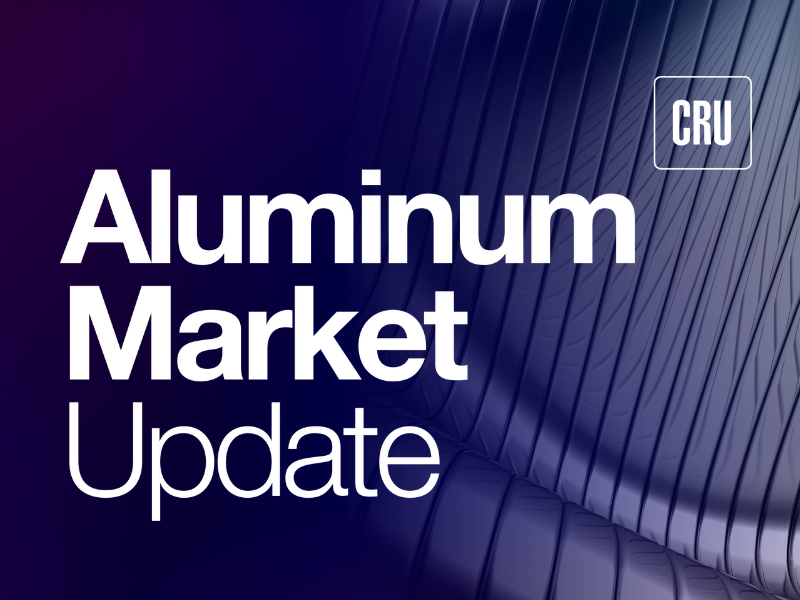AMU

July 18, 2025
AMU: Q2 tariff headwinds blow Alcoa inland
Written by Nicholas Bell
This piece was first published by SMU’s sister publication, Aluminum Market Update. To learn about AMU, visit their website, or sign up for a free trial.
Alcoa’s second quarter earnings showcase the first full three-month period of the drastically changed tariff landscape.
Despite an annual 5% increase in primary aluminum production to 572 million tons, shipments dropped by 6% to 634 million tons over the same period. The divergence may be an aspect of the reallocated metal staged for non-traditional customers, or it could simply be a demand story.
Net income sextupled year over year on the back of a 4% increase in quarterly revenue. Tariffs and an all-time-high Midwest premium lifted the average realized aluminum price to $3,143 per metric ton (t), alongside a plummeting alumina price.
Tariff front rolls in
The U.S. re-imposed Section 232 tariffs at 25% on imported aluminum on March 12, then doubled the tax on June 4.
In terms of the North American operations, Alcoa’s Canadian smelters bore the brunt, given that around 70% of its output has historically been destined for the U.S. At full run rate, that equates to some 750,000-800,000t of metal now subject to a 50% excise tax.
To mitigate some of the hit, Alcoa rerouted 100,000t of Canadian metal typically destined for the U.S. market to non-U.S. customers in Q2. The company said they will continue to do so until the Midwest Premium fully reflects the cost of tariffs and logistics.
That figure, by their estimation, should be around 75¢/lb.
Nonetheless, they’re able to pass through about 90% of that markup to customers under annual contracts, softening the impact on their margins, but not neutralizing the blow altogether.
In fact, Canadian smelters alone saw a $60 million margin compression, contributing to a total of $95 million in tariff-related costs this quarter and a total of $115 million year-to-date.
High pressure system, low margins
While the realized price per ton rose roughly 10%, the per-ton margin dropped 29%. So, while the tariffs are putting upward pressure on the price of aluminum, it’s putting even more pressure on the cost-to-serve the U.S. market.
Quarterly revenue edged higher by 4% from the prior year period to $3 billion. Yet, the company posted a net profit of $164 million compared to a $20 million gain in 2024.
Two figures shed a little bit of light on that shift.
First, that’s a 70% sequential dip in profit from the first quarter of 2025.
Secondly, adjusted earnings before interest, taxes, depreciation and amortization (EBITDA), softened to $313 million from $325 million, “excluding special items”. The “special item” in this case was the resolution of a longstanding tax dispute in Australia.
Cloud cover over Warrick
One would think since Alcoa operates two of the four primary aluminum smelters not subject to U.S. Section 232 tariffs, their cost-to-serve the market would fare better than other firms, and it would incentivize more domestic production already in place.
While the 100,000t of diverted metal is close to double the idled capacity of a potline at Alcoa’s Warrick facility in Indiana, it’s also the one smelter in their North American portfolio powered by self-generated electricity not linked to the price of metal.
In other words, in times of elevated aluminum prices, that source of power acts as a tailwind for operating costs, though the inverse in true in a subdued environment.
One executive spoke on the idled potline, saying a restart would require an investment of about $100 million and a year of lead time would be needed to get that portion of the site up and running.
The capital cost coupled with the uncertainty around tariff permanence is keeping Alcoa on the sidelines in that regard.
That said, with the total tariff-related expenses reaching $115 million over the last two quarters – $90 million of which came from the latest quarter and an additional $90 million to be incurred by the end of September – and another three-and-a-half years of the Trump administration left, the gamble of bringing it online might be a risk worth taking.
Eye of the storm
Developments in Alcoa’s operations outside of North America inevitably lead back to navigating the U.S. tariff landscape.
The company exited its joint venture with Ma’aden in Saudi Arabia, which finalized just after the quarter ended, meaning the company’s exposure is further concentrated among its existing assets.
Adding to that, the constantly headline-making San Ciprián smelter that’s been the subject of labor disputes, acquisition discussions, power contracts – and most recently power outages – prompted a couple of questions on the quarterly earnings call.
The smelter was running at half capacity at the top of the year, requiring some additional work on residue storage to ramp up any further, experienced a grid failure in April and only restarted a couple of days ago.
Lastly, the Brazil question.
A new risk has emerged in the form of potential non-Section 232 tariffs on Brazil, where the Warrick and Massena West smelters in the U.S. source their alumina.
Trump has found a new target in the form of Lula da Silva’s administration as an oblique threat in defense of former president Jair Bolsonaro.
While alumina isn’t subject to Section 232 tariffs, a broad 50% tariff on Brazil could implicate the aluminum feedstock by default. All this at a time when the sharp drop in alumina prices has been one of the few tailwinds for Alcoa’s cost structure, including in the most recent quarter.
Alcoa’s contingency plan is sourcing alumina from their Western Australia assets, which even the company’s Chief Financial Officer Molly Beerman relented would likely take a significant logistical overhaul.
As a result, Alcoa’s operational emphasis is now more reliant on the performance of its North American facilities than it was at this time last year, prior to the tariffs.
Weather becomes climate
In a vacuum, headline profitability and steady sales revenue may offer a comforting snapshot in different times, but reading between the line items is a narrative of narrowing supply paths and increased exposure to a volatile trade environment.
In a cruel irony, Alcoa now relies more heavily on the performance of its North American operations, leaving it more exposed to a volatile trade landscape, despite being in a position often viewed as a potential beneficiary of U.S. tariffs.
Heading into yet another quarter with tariff-related costs projected to reach $205 million, the Section 232 framework no longer feels like a passing gust of headwind, it’s become a wind-swept climate entirely.
There are no reliable forecasts in this atmosphere, even the most seasoned operators are flying blind into tailwinds and headwinds that are indistinguishable.


